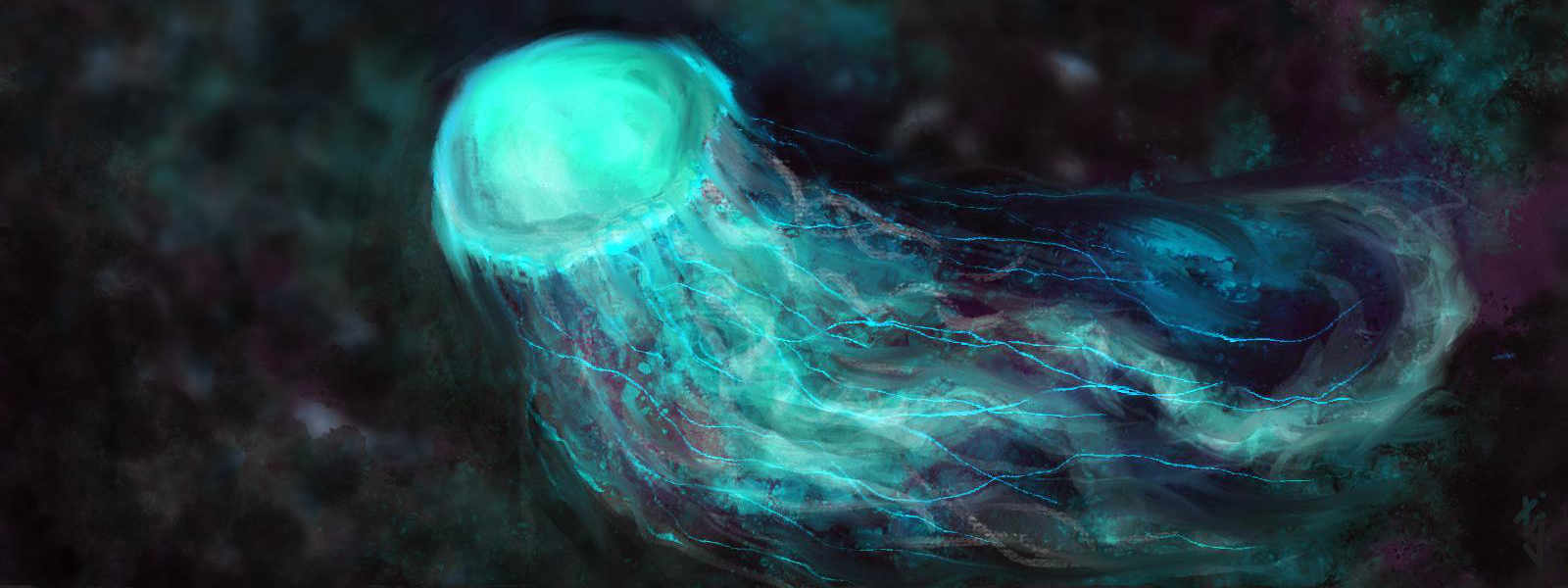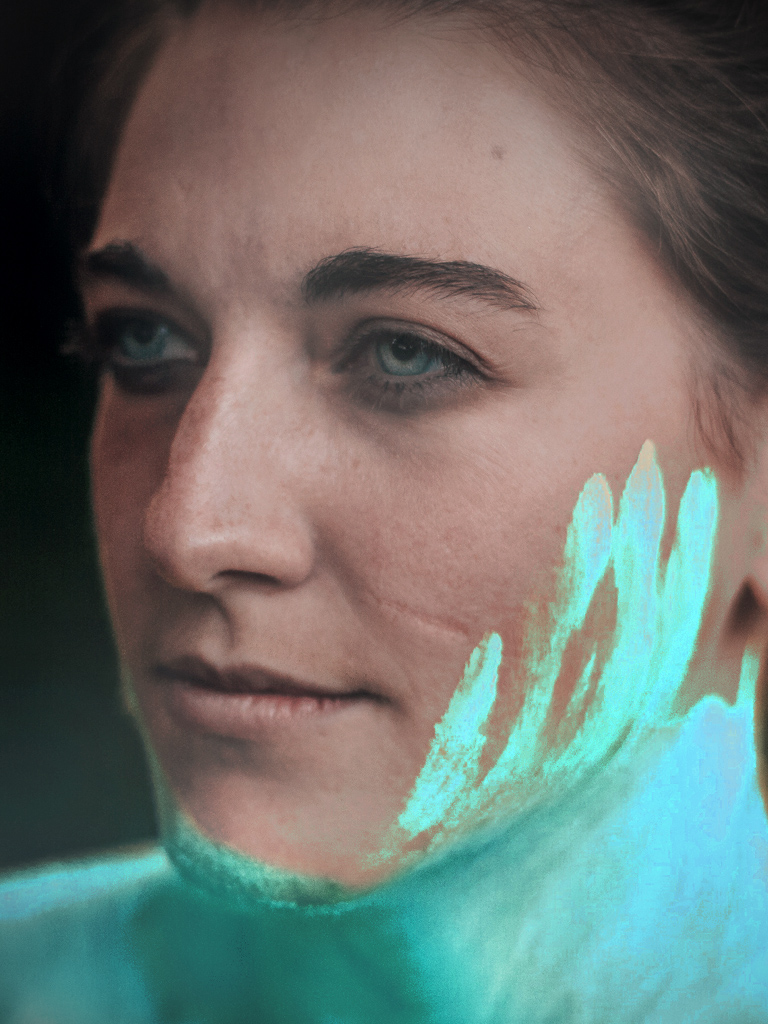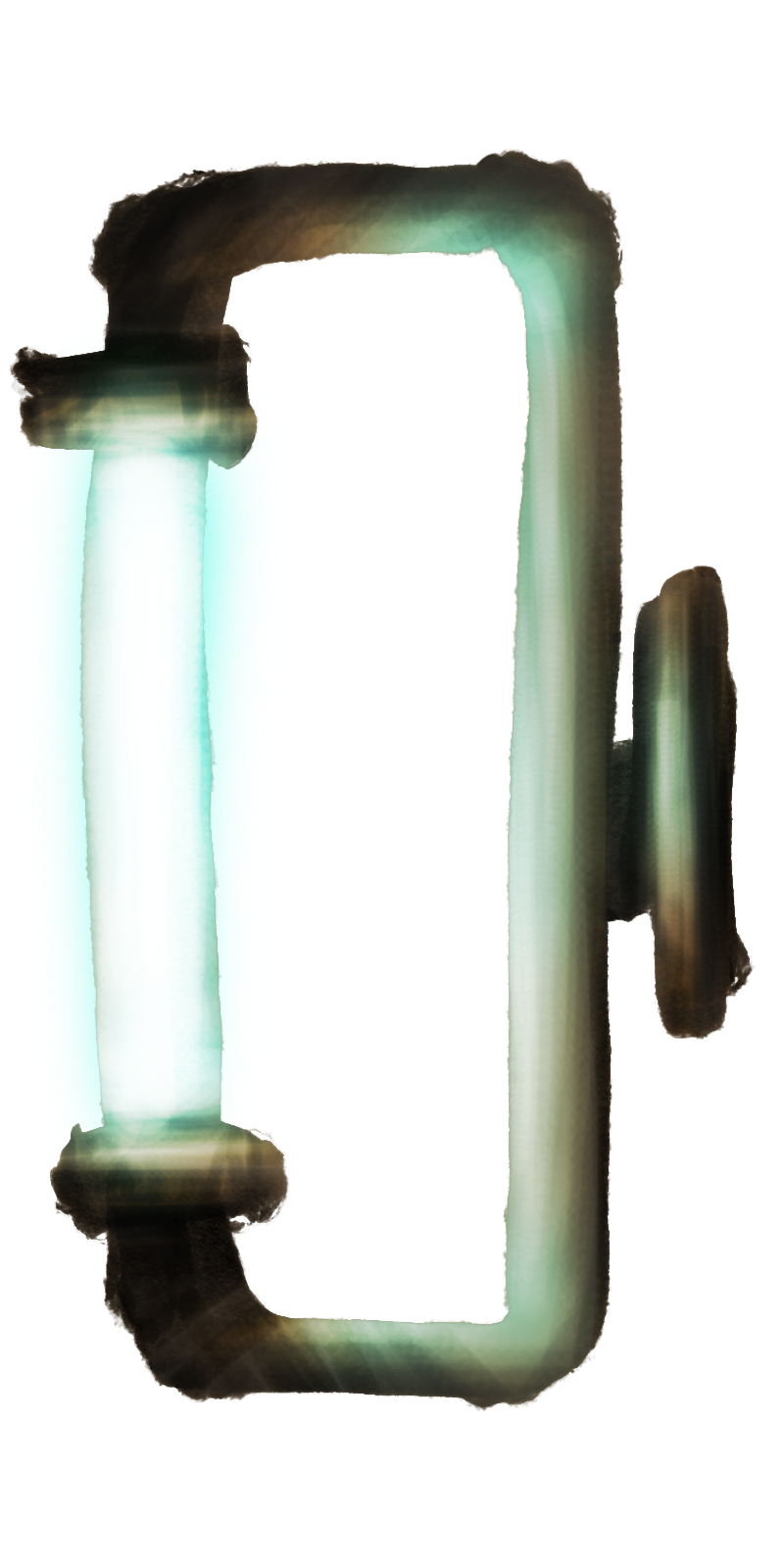Glow-Jelly
Bioluminescent jellyfish extract from the shores of Orubia.
Glow-jelly is the product of extracting the bioluminescence from certain species of jellyfish into solid or liquid light sources.
It has been utilised in many industries due to its non-flammable properties and bright quality of light. Bradstowe was the first city to adapt a lighthouse into a Glowhouse, using heated glow-jelly as a light source to guide ships at sea.
Fishing
The jellyfish are caught using a Jelly Trawler which attracts blooms to their own spectrum of luminescence by using glass rods of glow-jelly beneath the boat. Once the bloom of jellyfish are caught they are brought back to shore to be prepared for the distilling process.Distilling Process
- Tentacles must be removed and disposed of with care due to risk of temporary paralysis
- The main flesh of the jellyfish is diced and added to a water and vinegar solution which is then boiled for 7 hours
- This is then strained and the solids are discarded
- The liquid is evaporated to leave jelly powder (which does not glow in this form)
Properties and uses
| Substance/Form | Uses |
|---|---|
| Jellyfish tentacles | used as an ingredient in paralytic poison - sold illegally on the black market |
| Jelly powder | if ingested will cause great sickness and constipation, ending in the excretion of large glowing feces - it is not recommended to consume Jelly in any form or quantity |
| Glow-jelly (heated liquid form) | used as a light source if kept at optimum temperature and moving, can be integrated into heating system pipes with glass pipe sections to provide heat and light simultaneously can be mixed with ink and applied as a tattoo but will only provide a dim glow beneath the skin |
| Glow-jelly (solid form) | stored in glass vessels as a source of dim light (safe to use in mines or near flammable materials) artists can paint with Jelly mixed in adhesive to create artwork that has a faint glow smearing Jelly on skin will glow brighter if your body is warmer - often done in celebratory customs and festivals |
Jelly Festival takes place on Thirdday 17th Darkfall in the Calendar every year and is a big celebration of bioluminescent Glow-Jelly technology.
It is an opportunity for inventors to showcase their latest crazy ideas with Glow-Jelly. Street painters take portrait commissions and paint using pigments mixed with Jelly and adhesive to create faintly glowing masterpieces.
In the evening as the light goes down people celebrate by smearing and painting abstract designs onto their bodies using lavender infused Jelly and party into the night with song and dance.
The festival is usually held next to the sea in the hopes of witnessing a glowing bloom of jellyfish, but cultures from colder regions celebrate the customs near any body of water so that the light of their celebrations glisten on the surface.






Comments